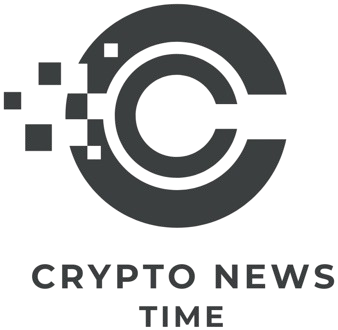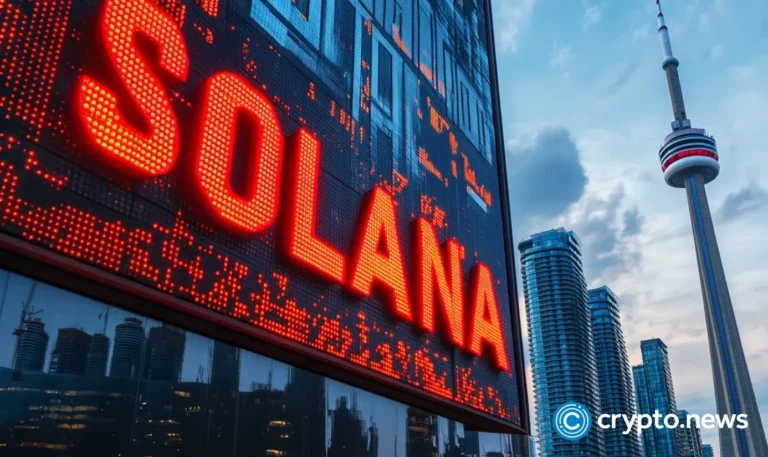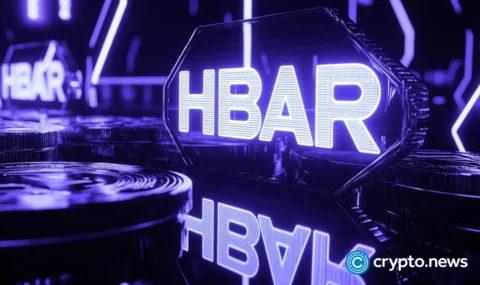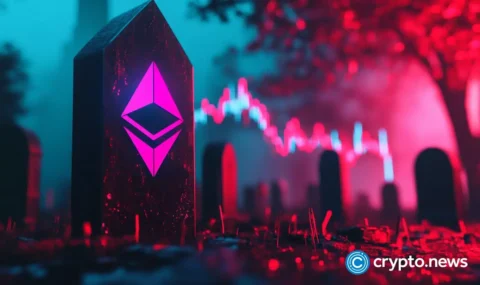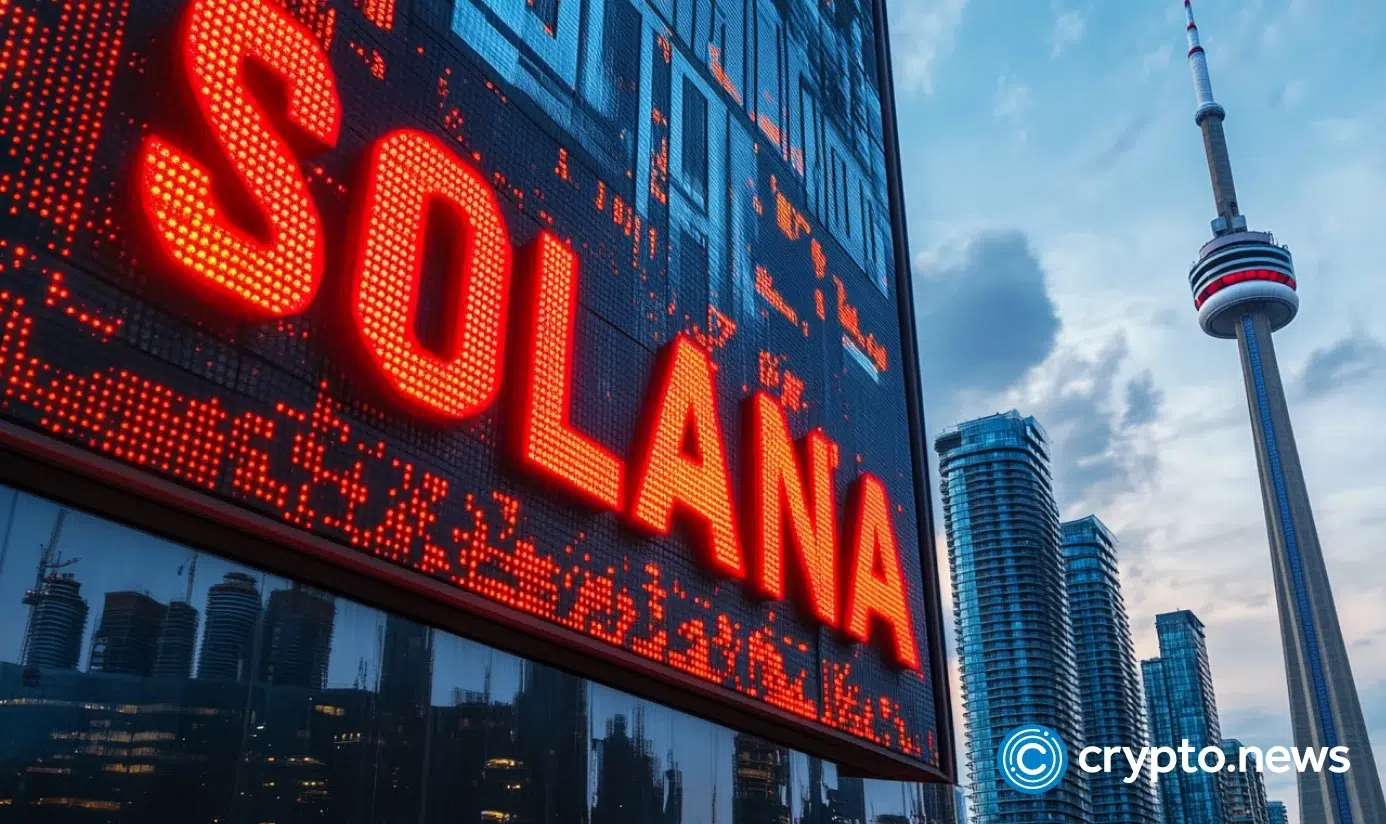
The investment universe for non-crypto native investors has largely revolved around Bitcoin and Ethereum ETFs. But that’s changing fast with the introduction of a new Solana product on the Toronto Stock Exchange.
As a Canadian working in crypto space, this announcementcaught my attention. The collaboration between 3iQ Corp. and Figment to bring a Solana (SOL) staking ETF to the Toronto Stock Exchange marks an interesting step in giving mainstream investors (i.e my parents) straightforward, easy, and convenient access to one of the more closely followed proof-of-stake blockchains in the ecosystem.
I’m not sure my parents have ever heard of Solana, but at least now they can invest in it.
With that said, I caught up with Figment’s Head of Americas, Josh Deems, to dive deeper into what it means to be the ETF’s “primary staking provider,” how this collaboration with 3iQ came together, and what everyday investors stand to gain from a Solana staking ETF.
We also explored Figment’s unique technical strategy for maximizing rewards, their handling of Solana’s network quirks, and what’s next in the evolving world of proof-of-stake investment vehicles.
crypto.news: How did this partnership with 3iQ come about, and what does being the “primary staking provider” entail for Figment? What are the main responsibilities or commitments Figment has made under the partnership?
Josh Deems: The partnership between Figment and 3iQ evolved from a long-standing relationship between the two Toronto-based firms. While they had previously collaborated in various capacities, their recent work together focused on deploying staking infrastructure for Solana, including various 3iQ’s private fund vehicles. This collaboration ultimately led 3iQ to select Figment as the primary staking provider for its new Solana Staking Exchange Traded Product (ETP), SOLQ.
As the primary staking provider, Figment is responsible for operating most of the staking infrastructure supporting SOLQ. The bulk of assets staked through the ETP will be delegated to Figment-operated validators. In practice, this means Figment is running dedicated infrastructure specifically for 3iQ, allowing 3iQ to offer an ETP that uses a Solana validator solution that is both institutionally robust and deeply integrated with Figment’s technical expertise.
The partnership reflects a uniquely Canadian collaboration that combines Figment’s established Solana staking capabilities with 3iQ’s leadership in digital asset management, delivering an institutional-grade staking solution tailored for the public market vehicles.
CN: Can you explain what does the launch of a Solana Staking ETF mean for everyday investors interested in Solana? In other words, how does investing in an ETF compare to simply buying and staking SOL on their own. Basically, what are the practical benefits for retail investors, such as ease of use, custody security, or regulated oversight, and any trade-offs like fees or custody of the actual tokens?
JD: SOLQ offers everyday investors a streamlined, regulated way to access the benefits of staked SOL. Instead of navigating the complexities of crypto, they can invest directly through their brokerage account, just like any stock or ETF.
This structure offers several practical benefits:
- Ease of Access: The ETP is listed on the Toronto Stock Exchange, so anyone with a brokerage account that supports TSX-listed securities can buy it, without needing to use a crypto-native platform.
- No Staking Complexity: Investors are not required to manage the staking andunstaking process, or navigate Solana’s unbonding period. These activities are managed by the fund manager and staking provider behind the scenes.
- Custody & Security: The fund handles custody of the SOL assets, removing the need for investors to store or secure their own tokens.
- Tax & Account Advantages: In some jurisdictions and account types, holding an ETP may offer tax benefits or be available in accounts (like retirement accounts) where holding native crypto is restricted.
- Regulatory Oversight: The product is regulated by the Ontario Securities Commission, offering investor protections that may not be available with direct staking.
Naturally, there are trade-offs. Investors pay management fees (though waived for the first 12 months of SOLQ) and they don’t have direct custody of the tokens. Still, for those prioritizing convenience, a familiar brokerage experience, and regulated exposure, the ETP provides a streamlined path to Solana staking.
This launch is also globally significant—it’s the first staked Solana ETP available in North America. While comparable products already exist in Europe, this Canadian milestone sets a key precedent and may help open the door for future approvals in the U.S.
CN: Does offering staking within an ETF signal a broader trend in crypto investing, and how does Figment view the future of staking ETFs? 3iQ already introduced an Ether Staking ETF in 2023 and now Solana. Does this indicate that regulators and fund issuers are warming up to staking rewards in traditional wrappers. Is this the start of staking becoming a standard feature in crypto ETFs for other proof-of-stake assets, and what might that mean for the adoption of crypto in mainstream finance?
JD: Yes. Staking within an ETF is a clear signal of where the market is heading, and Figment views this as the beginning of a much broader shift in crypto investing. As investors seek more diversified exposure to digital assets, there’s growing demand for products that not only track the price of tokens like Solana or Ethereum, but also reflect the full value of owning them which includes staking rewards.
We’ve already seen this evolution play out globally. In Switzerland, for example, staked ETP inflows have outperformed peers that don’t offer staking. With 3iQ’s staked Ether ETF in 2023 and now SOLQ in 2025, Canadian regulators have shown a willingness to support these structures that offer investors access to staking rewards within a familiar, regulated vehicle.
For retail and institutional investors alike, this is more than a convenience. Staking is a fundamental part of how Proof-of-Stake networks function–it’s how blockchains remain secure and operational. In return, participants earn rewards. Not including staking rewards in a Proof-of-Stake ETP is like offering an equity income ETP that doesn’t pay out dividends. Over time, that leaves missed returns on the table.
The regulatory landscape is shifting as well. While U.S. regulators have yet to approve staked ETFs, regions such as Canada, Switzerland, and Hong Kong are demonstrating increasing receptiveness. Figment believes that staking will eventually become a standard feature in crypto ETFs for Proof-of-Stake assets. As the market demonstrates demand, it’s only logical that both fund issuers and regulators will follow suit.
CN: How is Figment ensuring the security and transparency of the staking operations for this fund?
JD: Figment supports 3iQ by delivering daily, detailed reports that break down the different types of rewards earned through Solana staking. These reports allow 3iQ to accurately calculate and report the NAV including earned staking rewards. This level of transparency ensures fund administrators and investors have full visibility into how the fund is performing and how rewards are generated.
On the security front, Figment follows industry-leading standards. The firm is SOC 2 Type II certified, reflecting rigorous controls around data security and operational integrity. Figment also operates as a Genesis validator on the Solana network, and its team includes some of the world’s foremost experts in running Solana validator infrastructure.
Figment’s approach prioritizes “safety over liveness”—meaning we emphasize minimizing the risk of any harmful or slashable events, even if it means occasional short-term trade-offs in validator activity. Additionally, our team actively monitors Solana network developments and implements upgrades to enhance validator security and performance. This combination of real-time monitoring, technical depth, and institutional-grade practices ensures that 3iQ’s staking operations are both secure and transparent.
CN: Can you speak to Figment’s track record with Solana and how that experience will benefit ETF investors? How does this expertise translate into reliable performance for SOLQ? And how has Figment handled past Solana network challenges, i.e the occasional outages to safeguard stakers’ interests?
JD: Figment is a Genesis validator on the Solana network and operates two of the top five validators by assets under stake. We maintain rigorous monitoring and incident response procedures, including active coordination with the Solana Foundation during network-wide halts and established protocols for safe node restarts. Our “safety over liveness” approach prioritizes asset protection over maximizing uptime. That said, Solana has not experienced an outage in over a year, and network recovery times have improved significantly from days to just hours. ETF investors can have confidence in Figment’s deep experience and long-standing commitment to Solana, backed by a dedicated team of engineers supporting the network since its inception.
CN: How will Figment handle the evolving economics of Solana staking, from MEV gains to potential yield compression, to maximize returns for ETF holders? Will Figment be capturing and passing along these MEV earnings to benefit the fund’s investors? And how is Figment planning for the long term with Solana’s inflation schedule changing and concepts like “restaking” (re-using staked assets in other protocols) emerging, what’s the strategy to keep yields competitive without taking on undue risk?
JD: Figment is proactively adapting to the changing dynamics of Solana staking to maximize returns for ETF holders while maintaining our strict standards around compliance, security and operational integrity.
In March 2025, Figment delivered a 7.58% average staking rewards rate on Solana, outperforming the network average of 6.99% by more than 8%. A key contributor to this outperformance was our ability to capture and pass through MEV rewards. We do this through our integration with Jito, the leading MEV infrastructure provider on Solana. In fact, MEV rewards made up over 11% of the total rewards Figment earned in March which demonstrates just how impactful this component has become as Solana’s inflation rate continues to decline.
With Solana’s annual disinflation rate set at -15% until it reaches a terminal rate of 1.5%, traditional inflation-based staking rewards will continue to compress. As it happens, Figment sees MEV and emerging innovations like restaking essential to maintaining and even growing validator rewards. We’re already experimenting with new MEV strategies and restaking frameworks, and we rigorously test any new approach internally before deploying it on live validators like those serving the SOLQ ETF. This ensures innovation without compromising the safety of customer funds.
